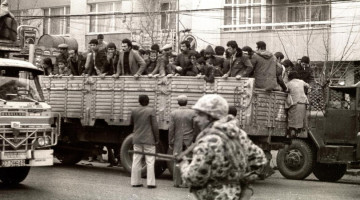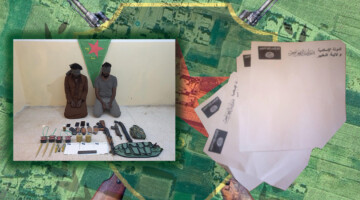The security vacuum created after Hay’at Tahrir al-Sham (HTS) took over administration in Syria has especially increased abductions targeting Alawite women and girls. According to research by Reuters, at least thirty-three women and girls have been abducted or have disappeared this year from areas with a large Alawite population, such as Latakia, Tartus, and Hama.
Ransom and threats
One of the abducted girls, 29-year-old Abeer Suleiman, was kidnapped on May 21 while walking on a street in the city of Safita, Tartus. In a message sent to her family via WhatsApp, the kidnappers wrote: “She will not be coming back.” They threatened to kill Abeer or sell her as a slave if a $15,000 ransom was not paid.
The family managed to borrow the money and transferred it to accounts in Izmir. However, after the ransom was paid, the kidnappers cut off all communication. In her last phone call, Abeer said she was no longer in Syria and that "the dialects spoken around her were strange," raising suspicions that she might have been taken to Iraq.
Women aged 16-39 targeted
Detailed interviews about 16 of the 33 cases documented by Reuters revealed that seven were clearly abductions for ransom, with demands ranging from $1,500 to $100,000. Three of the kidnapped women informed their families they had been taken abroad. The fate of the other nine remains unknown. Eight of those missing are under 18.
Officials silent
Families complain that HTS-affiliated forces are not taking the incidents seriously and have failed to conduct thorough investigations. The media officer for the Tartus Governorate, Ahmed Mohammed Khayr, denied that Alawites were being specifically targeted, claiming the disappearances were due to “family disputes” or “personal reasons,” though he presented no evidence for these claims.
In March, Syria’s Transitional President Ahmed al-Shara established a committee to investigate violence against Alawites. However, committee members have refrained from making any statements about the missing women.
Kidnappings happen in broad daylight
Most of the kidnappings happened in broad daylight, while the victims were running errands or using public transport. For example, on February 27, a 17-year-old girl was abducted on her way to school in Latakia. In a message sent to her family, the kidnappers threatened: "Don’t share her photos, or we will send her blood."
Similarly, 35-year-old Khazama Nayef was kidnapped by a group in Hama and held for fifteen days. Her family paid a $1,500 ransom for her release, but when Khazama returned home, she was severely traumatized.
Human rights activists report that most of these abductions increased after the March attacks on Alawites, stating: "There is a real problem here: Alawite women are being kidnapped." Many families in Tartus, Latakia, and Hama say they are now too afraid to send their daughters to school.
Throughout Syria’s civil war, women from opposition groups have also been similarly targeted. But these recent incidents are fueling serious fears that there is now an organized campaign of violence and systematic threats specifically targeting the Alawite community.














